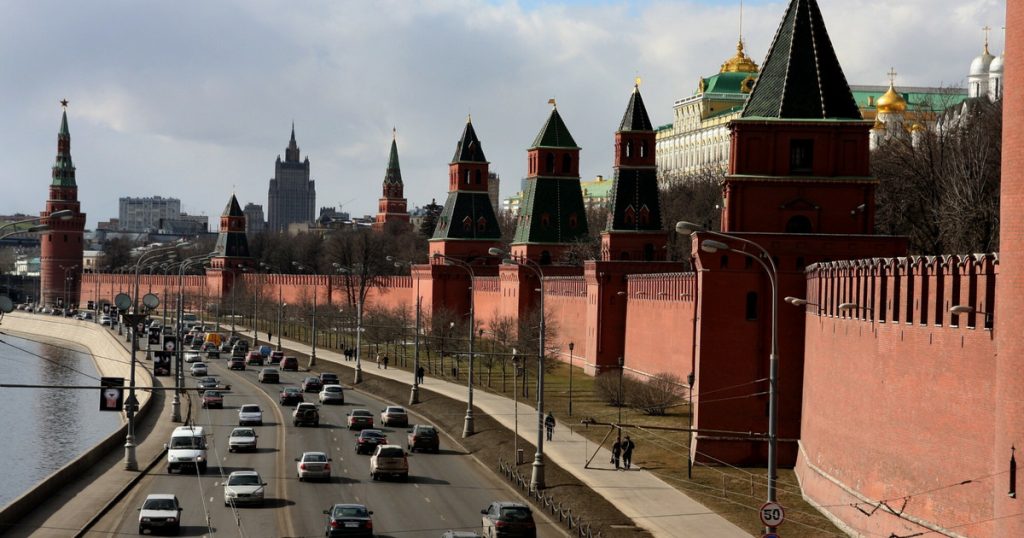On Wednesday, March 16, Russia will pay investors coupons on dollar bonds – a total of 117 million dollars. However, the Central Bank of Russia has banned sending foreign currency abroad.
– Paying interest on Russian dollar bonds in local currency will mean bankruptcy of the state after a grace period of 30 days, starting from March 16, – rating agency Fitch indicated, as reported on Wednesday by PAP. According to Fitch, quoted by the Financial Times, If Russia “try to pay interest on its dollar bonds in rubles, it means that … for the first time since 1998, it will not repay its debt.”
Investors are awaiting $117 million in coupons for Russian bonds, the first such payment since Western countries responded to President Vladimir Putin’s invasion of Ukraine with unprecedented financial sanctions. The “Financial Times” reported that this date is a major test of Moscow’s willingness and ability to continue to service its foreign debt.
On March 5, Putin said that creditors of “enemy” countries (that is, those that have imposed sanctions) should be paid in rubles, not in foreign currencies. A day later, the Russian Finance Ministry issued a statement confirming Putin’s announcement. The ministry then noted that “Russia will use the ruble for payments to residents for bonds denominated in foreign currency.”
The Russian Finance Ministry issued a statement saying, “It will serve and repay the state’s debts in full and on time, but the repayment may be hampered by international sanctions.” Reuters said, however, “there is a possibility of a technical default on the debt.” This is because The West froze most of Russia’s $640 billion financial reserves in response to the aggression against Ukraine. PAP reported this on March 7.
The Financial Times quoted a statement by Russian Finance Minister Anton Siluanov on Wednesday. He confirmed that the payment instructions had been sent to the US bank that normally handles such transactions; However, there is a risk that cash will not arrive – The head of the Russian Finance Ministry added.
– Earlier this week, Siluanov said that in the event of a transfer failure, payment will be made in rubles. He added that Western sanctions that freeze some assets of the Russian Central Bank are an attempt to force the country to “artificially default” on $38.5 billion in foreign currency bonds. – I gave the magazine.
Fitch believes that a “forced reset” of the coupon payments would indicate that “a bankruptcy or similar process of insolvency has begun,” the Financial Times noted. The British daily added, “Some Russian dollar and euro bonds contain a reserve clause allowing the ruble to be redeemed. But this does not include bonds whose two coupons must be paid on Wednesday.”
The Financial Times also quoted Anatoly Aksakov, Chairman of the Finance Committee of the Russian State Duma: “Do we have to fulfill our obligations when our so-called partners do not fulfill theirs? The decision is up to the executive authorities and the Central Bank.”
In its analysis, the magazine stated thatSince the United States and Europe imposed sanctions on the Russian Central Bank last month, Western investors have been preparing to default. On Wednesday, coupon notes are trading at less than 30 cents in the dollar, although they are slightly higher from recent lows of about 20 cents. Losses – added the Financial Times.
Failure to repay Russia’s foreign debt – some $20 billion of which was in foreign hands before the invasion – would raise questions about the increased debt in rubles and About $90 billion in foreign currency bonds issued by Russian companies – The Financial Times confirmed.
As stated by the authors of the article, the Russian government stated that “the last coupon payment for these domestic bonds will not reach foreign holders because the Russian Central Bank has prohibited sending foreign currency abroad.” However, the newspaper added that “some Russian companies, to the astonishment of many investors, continue to pay interest and pay off outstanding bonds.”
Russia recently went bankrupt in 1998.
– Russia’s most recent bankruptcy in 1998 sparked a financial crisis and led to the almost complete collapse of the US hedge fund Long-Term Capital Management. The Financial Times noted. “The government then restructured its debts in rubles and Soviet dollars, but continued to pay international bonds issued after the collapse of the Soviet Union,” the newspaper said.
He explained that Reuters “When the Soviet Union disintegrated, Russia took over its foreign debt.” The agency noted that “this time Russia has the money, but it cannot pay it because the reserves – the fourth largest in the world – that Putin ordered to be collected in the event of such a crisis, were frozen by the United States, the European Union, Great Britain and Canada.”
Russia has failed to fully repay its foreign debt only once in its history. This happened in 1918 after the Bolshevik Revolution (1917), when the new regime completely canceled the debts that had been incurred during the tsarist era.
Russia’s aggression against Ukraine has been going on since February 24. In connection with Russia’s military aggression, many countries have imposed economic and political sanctions on Russia

“Problem solver. Proud twitter specialist. Travel aficionado. Introvert. Coffee trailblazer. Professional zombie ninja. Extreme gamer.”




More Stories
Below is the schedule of pension payments as of July 2022. Find out what benefits you will get after the changes [17.07.2022]
Overview of the new electric sports cars for the Hyundai Ioniq 5 N and Ioniq 6 N
Portugal has launched a floating solar power plant. It is the largest structure of this type in Europe – Economy